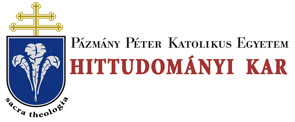Folia Theologica 15. (2004)
Szabolcs Anzelm Szuromi: Rules concerning bishops in the Decretales Pseudo-Isidorianae, especially the regulation on the death of bishops
152 SZ. A. SZUROMI tinguish between ius funerandi and ius tumulandi. The first marks each competent authority who has the right of funeral; the second marks that certain authorized person who can particularly bury the dead.29 Three types of funeral place are known in that time: 1) The regular funeral place, which was at the parish, or a common funeral place for religious. 2) The chosen funeral place, which could be designated in the will or testament. We can mention here the parish, or the religious cemetery. 3) And finally the family's own burial-place.30 The 4th-8th century councils prohibited any type of burial in the Church,31 and said: (...) ut corpora defunctorum nullo modo intra basilicam sanctorum sepeliantur, sed si necesse est de foris circa murum basilicae usque adeo non adhorret. (...)32 The two above-mentioned councils - whose contents basic rules concerning the death of bishops in Decretales Pseudo-Isidorianae - belong to this early period of the councils. Therefore, according to the old regulation, burial was possible only outside of the church's walls. Naturally, we can refer to the chapters of Theodulf de Orleans (798-818),33 which in one place, namely, in 1. 11, let the funeral inside the church. This text prohibits in general burial in the church, but allows for the posBarcinonensis - ordo praedicator - de poenitentia et matrimonio cum glossis Ioannis de Friburgo. Ad S.D.N. Clemen pp VIII, nunc primum in lucem edita, 140. 29 ROMO, A., La sepultura parroquial en el derecho canonico, Roma 1942. 81-85. 30 ROSSI, G., La „sepultura ecclesiastica" e „ius funerum ".Bergamo 1920. 83-85. 31 ROSSI, La „sepultura ecclesiastica", 285-290. 32 Concilium Bracarense (561) c. 18. The next sentence is the following: (...) Nam si firmissimum hoc brebilegium usque nunc retinent ciuitates, ut nullo modo intra ambitus murorum cuiuslibet defuncti corpus humetur, quanto magis hoc uenerabilium martyrum debet reuerenti obtinere. VIVES, J.-MARTÍNEZ, T.M.-MARTÍNEZ DÍEZ, G. (edd.), Concilios Visigóticos e Hispano-Romanos, Barcelona-Madrid 1963. 75. 33 Cf. IMBERT, J., Les tempes Carolingiens (741-891). L’Église: les institutions (Histoire du Droit et des Institutions de l’Eglise en Occident V/l), Paris 1994. 28, 96, 180.
